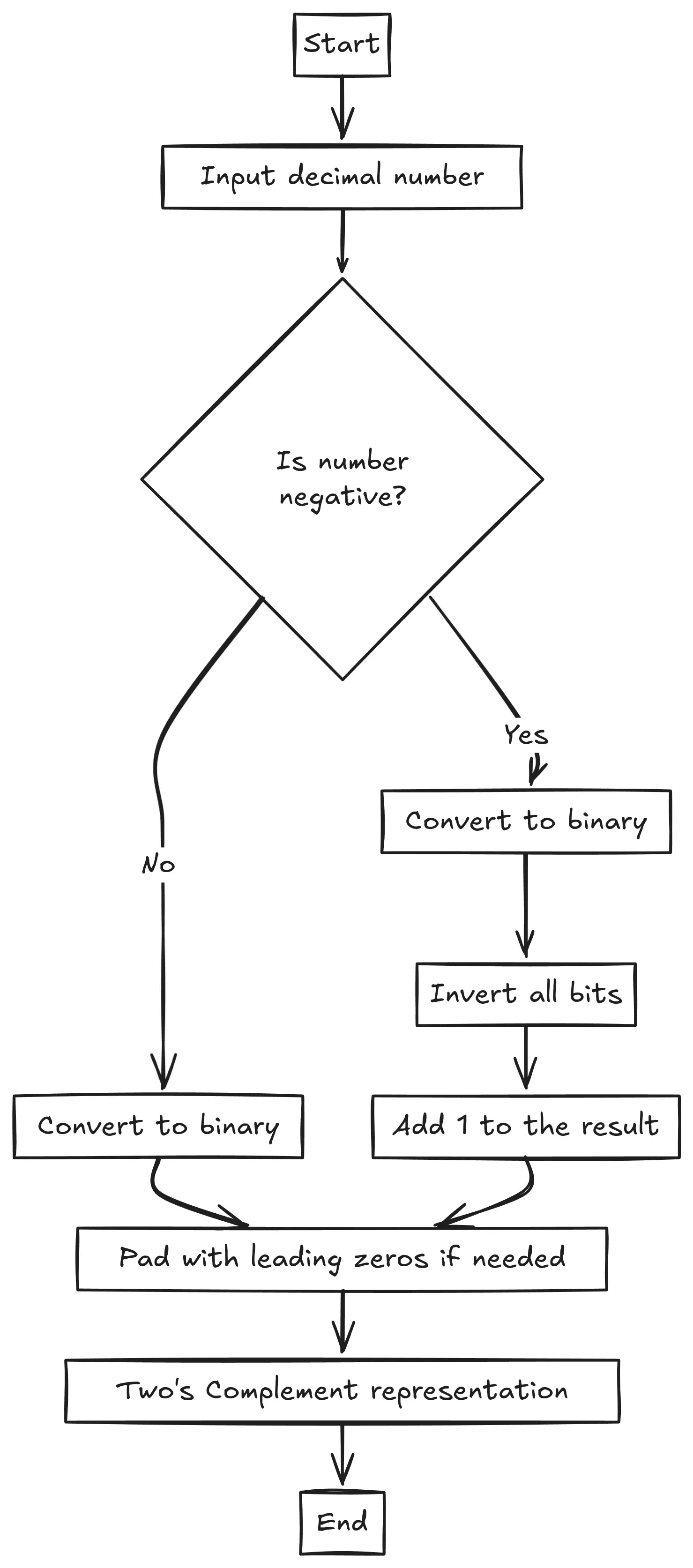Two’s complement is a way of representing signed integers in binary. Here’s how it differs from the standard binary representation in C:

Binary Representation
- Binary is the raw representation of numbers using
0s and1s. - Unsigned binary represents only non-negative numbers (
0and positive numbers).
For example:
- Decimal 5 →
00000101(8-bit binary) - Decimal 12 →
00001100(8-bit binary)
This representation doesn’t handle negative numbers.
Two’s Complement Representation
- Two’s complement is used for signed integers, which can represent both positive and negative numbers.
- **Key differences:
- The most significant bit (MSB) becomes the sign bit:
0= Positive1= Negative
- Negative numbers are encoded by taking the two’s complement of their absolute value:
- Invert all bits (
~n) - Add
1to the result.
- Invert all bits (
- The most significant bit (MSB) becomes the sign bit:
For example, in 8-bit representation:
- Decimal 5 →
00000101(same as binary, MSB is0) - Decimal -5:
- Start with
5→00000101 - Invert bits →
11111010 - Add
1→11111011
- Start with
Thus, -5 is represented as 11111011.
Practical Differences in C
Unsigned (Binary Representation)
-
unsigned intis always treated as a positive number.unsigned int x = 250; // 250 is stored as binary directly
Signed (Two’s Complement Representation)
-
int(signed by default) uses two’s complement to represent negative numbers.int y = -5; // Stored as 11111011 in two's complement
Key Behaviors
- Arithmetic:
- Two’s complement enables seamless addition/subtraction of positive and negative numbers without requiring special handling.
- Overflow:
- For signed integers, exceeding the range (e.g., adding to
INT_MAX) causes wraparound in two’s complement. More on Integer Overflow.
- For signed integers, exceeding the range (e.g., adding to
Example in Code:
#include <stdio.h>
int main() {
int a = 5; // Positive number, binary: 00000101
int b = -5; // Negative number, two's complement: 11111011
unsigned int c = 5; // Binary representation: 00000101
return 0;
}In summary:
- Binary representation is straightforward and used for unsigned integers.
- Two’s complement is the standard for signed integers because it simplifies arithmetic operations with mixed positive and negative numbers.